The complete guide to Qlik certifications and qualifications
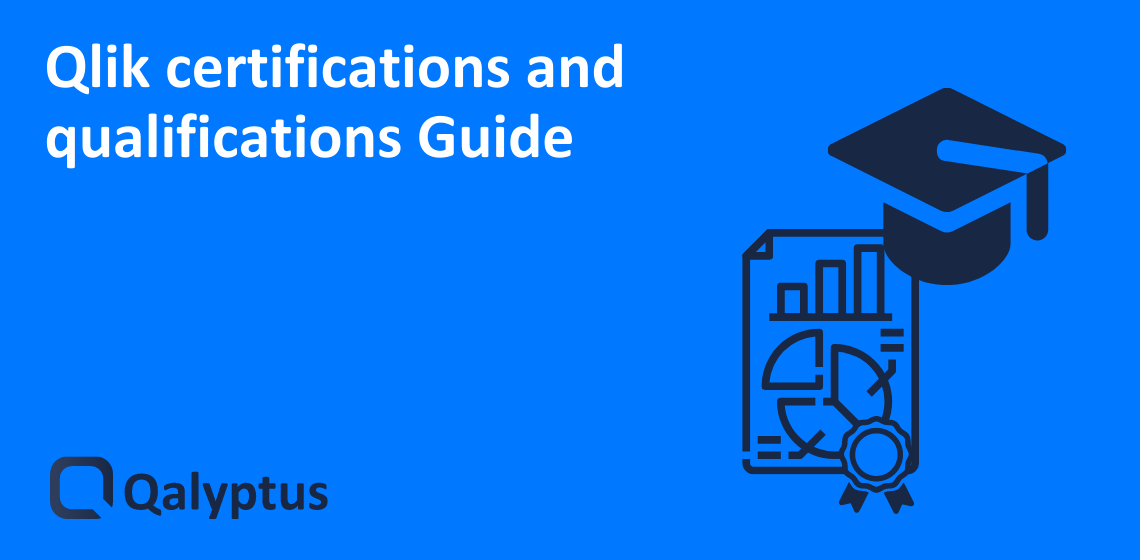
Certifications and qualifications are two procedures used to test your skills regarding the requirements of uses of a service offered by an independent organization.
The goal is that you, as a candidate and after validation of these skills and obtaining this certification or qualification, are certified by this organization as competent and able to use the proposed service.
You then obtain a title justifying your knowledge and your product expertise.
Passing a Qlik certification can be useful or even essential if you want to become a partner, if you need to prove your level of expertise or if you want to validate your skills and knowledge. Certifications are intended to be challenging to make them a recognized certificate.
In this article we have listed the questions you may encounter during your exams reviews.
1- The different existing certifications and qualifications
1-1. Data Literacy Certification
1-2. Data Analytics certification
1-3. QlikView Business Analyst Certification
1-4. QlikView Data Architect Certification
1-5. QlikView System Administrator Certification
1-6. Qlik Sense Business Analyst Certification
1-7. Qlik Sense Data Architect Certification
1-8. Qlik Sense System Administrator Certification
1-9. Qlik Sense Business Analyst Qualification
1-10. Qlik Sense Data Architect Qualification
2- How much does a certification cost?
3- Where to take the certifications and qualifications exams?
4- How to prepare?
5- Some specificities about the exams
6- How to display badges and certificates?
7- In case of disability
1- The different existing certifications and qualifications
Qlik currently proposes ten different diplomas, but what is the difference between certification and qualification?
Choose certification if you want to demonstrate your expert level using Qlik Sense or QlikView. It will be required if you are going to become a Qlik partner.
The Qlik Sense and QlikView certifications are provided by Pearson VUE
You can pass the exam online or at a Pearson VUE test center according to the organization’s conditions. Each certification costs $250.
This certification is an expert-level exam for experts, Qlik Sense and QlikView data analysts, business analysts, and system administrators.
The qualification will assess your basic knowledge of the Qlik Sense product (no qualifications for QlikView).
You can take the exams for free if you are enrolled in the Qlik Continuous Classroom program or if you purchase a training course with a Qlik instructor.
This qualification is intended for QlikSense users, data analysts and business analysts.
Certifications do not expire after a certain date. However, it may be out of date if a new version of Qlik is released in the meantime, so it is advisable to keep it up to date.
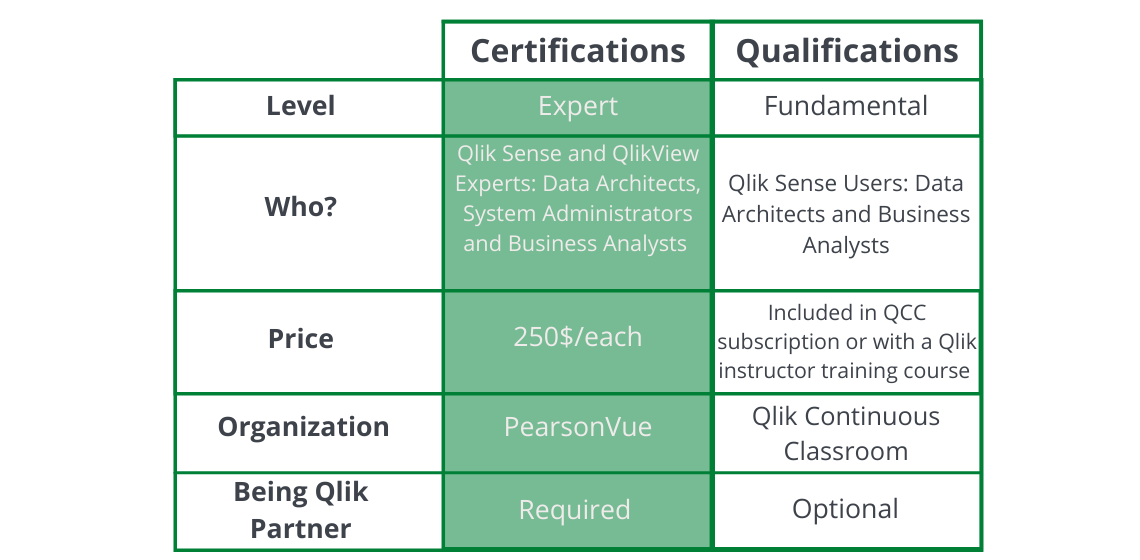
Let’s have a closer look at the different certifications and qualifications offered by Qlik:
1-1. Data Literacy Certification
The Data Literacy certification is not related to a particular product, and it values the personal skills of the user in terms of business knowledge.
To pass the exam, you must be sure that you have sufficient knowledge of data and analytics.
This exam lasts 2h30 and includes 70 multiple-choice questions.
To validate this certification, you will be required to have a 65% pass rate.
The topics of the exam are the following:
Interpret Business Requirements: Discuss business requirements for feasibility to implement; Change a business question into an analytical question; Explain data sources and refresh frequency needed to implement requirements; Discuss KPIs, dimensions, and measures for analysis.
Understand and Transform the Data: Explain various data types and implications for analysis; Compare various classifications of data; Explain data structure and implications for analysis; Explain subset of data needed for analysis using coding terminology; Contrast data schemas and how they impact analyses; Use basic statistic; Explain aggregations needed for analysis; Contrast types of distributions and explain implications in analysis; Assess the need for data governance and security; Transform data structure.
Design and Build Visualizations: Use appropriate visualizations and level of complexity for audience; Use appropriate measurements; Use appropriate properties of visualizations; Arrange visualizations to engage audience and enable analysis.
Interpret Visualizations: Determine whether visualization is valid and can answer the analytical question; Interpret visualizations to create observations; Explain outliers, trends, and relationships between data elements; Recommend a theory, then validate or invalidate it.
Analyze Results: Break down thoughts and ideas into a cohesive and logical analysis plan; Analyze data and visualizations iteratively; Examine your point of view for objectivity; Evaluate different perspectives; Question visualizations to develop insight; Test for correlations and causations in the data; Examine the data and visualizations with curiosity.
Act on Results: Decide the insights gained from analysis; Recommend actions based on analysis; Predict potential consequences of actions to minimize unintended consequences; Assess actual results of actions; Analyze feedback and determine adjustments needed for analysis.
Share Results: Summarize audience member types and what they care about; Justify your analysis, observations, and insights; Justify your conclusions, recommendations, and proposed actions with confidence; Evaluate and incorporate feedback into action plan; Use information ethically and appropriately.
To be well prepared for these topics, it is recommended to use the following books:
The Functional Art, by Alberto Cairo, Data Visualization, by Andy Kirk.
As well as the courses provided by the Qlik Continuous Classroom :
- All courses in the Introduction to Data Literacy section
- All courses in the Data Fundamentals section
- All courses in the Data-Informed Decision Making section
- Under the Foundational Analytics section, the Understanding Signal and Noise and Correlation vs Causation courses
1-2. Data Analytics certification
As the previous certification, the data analytics certification is not linked to a particular tool but is useful to test your analytical and statistical knowledge.
The exam lasts 2 hours and consists of 70 multiple-choice questions.
To validate this certification, you will be asked to pass with a score of 65%.
The topics of the exam are the following:
Data Foundations: Back-End; Data Architect; Database Design; Data Basics; Types – Ordinal; Cardinal, etc.; Attributes; Forms; Normalization/Optimization; Big Data.
Foundational Analytics: Aggregations; Distribution Analysis; Standard Deviation; Correlation and Causation; Signal and Noise; Probability; Sampling; Decision Tree Modeling; Goodhart’s Law.
Interpretation of Analytics: Hypothesis Testing; Type I/II Errors; Visualization Interpretation; Descriptive Statistics; Bias; Histogram/Box Plots; Inferential Statistics.
Advanced Analytics: K-Means Clustering; Markov Analysis; Regression Modeling; T-Test; Chi-Square Test; AB Testing; Algorithms; ANOVA.
To be well prepared, we recommend you rely on podcasts dealing with data analytics, such as Data Skeptic. You also have at your disposal the courses delivered by the Qlik Continuous Classroom and especially the following sections:
- All courses in the Introduction to Data Literacy section
- All the courses in the Fundamentals section
- All courses in the Advanced section
- All courses in the Data-Informed Decision Making section
- All courses in the Advanced Analytics section
1-3. QlikView Business Analyst Certification
The QlikView Business Analyst certification is designed to assess your knowledge of how to use QlikView applications. You may be interested in this certification if you are related to the analysis, design and layout of the application user interface.
To pass this test you must have basic knowledge of business intelligence, reporting and data analysis, create QlikView application and experience in user interface design and visualization creation.
The exam lasts 2 hours and consists of 50 multiple-choice questions.
To validate this certification you will be required to achieve a score of 65%.
The topics of the exam are as follows:
Gather and Interpret Requirements: Given a set of business objectives; determine KPIs, dimensions, or measures.
Identify and Analyze Data Sources: Given a dataset, determine the relationships among data.
Design and Develop the QlikView Application User Interface: Determine the result of a given function or complex expression; Identify where alternate uses of expressions are appropriate; Given a scenario, determine the appropriate function or complex expression to use; Explain how to implement Actions/Triggers in the QlikView interface; Given a scenario, determine the appropriate object or chart type to use; Explain the purpose/functionality of common object properties; Given a scenario, determine the appropriate application User Interface performance tuning option to use; Given user requirements, identify the appropriate screen resolution.
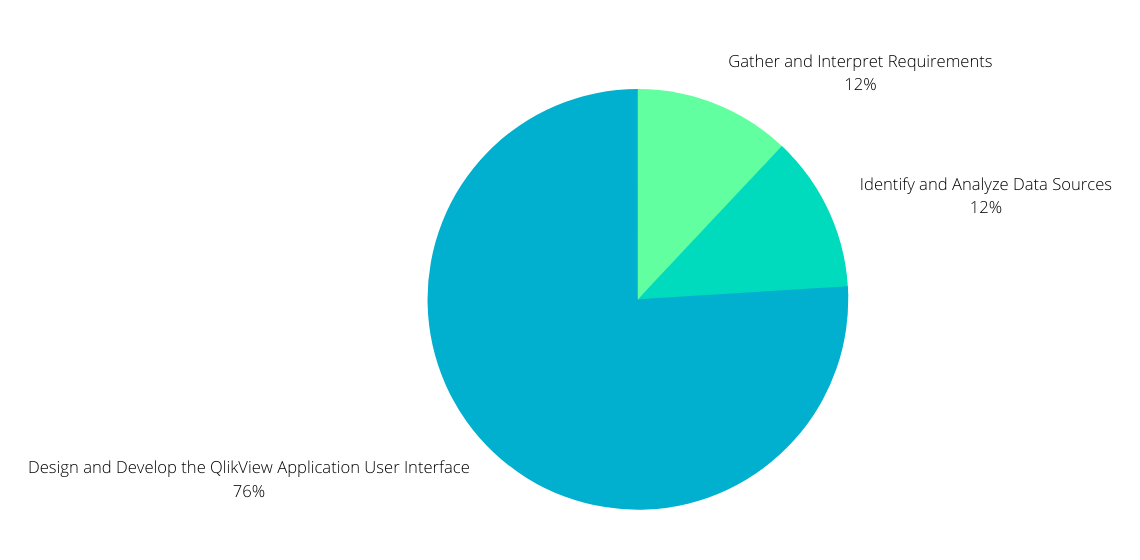
To prepare, you can use various materials such as the certified instructor-led training, the business analyst sections of the Qlik Continuous Classroom, the QlikView Developer and Advanced Topics in Design and Development training, and the sample questions for the QlikView Business Analyst Certification from Qlik learning.
1-4. QlikView Data Architect Certification
The QlikView Data Architect certification may be for you if you wish to validate your technical skills related to the development, deployment and support of QlikView applications, from design to modeling.
In order to pass this exam you should have advanced knowledge of business intelligence, reporting and data analysis, be proficient in one or more scripting languages, modeling and data visualization, be familiar with advanced QlikView features and be able to design and develop a user interface.
If you pass the QlikView Data Architect certification exam you will also obtain the QlikView Business Analyst certification detailed above.
The exam lasts 2 hours and consists of 60 multiple choice questions.
To validate this certification you will be required to achieve a score of 73%.
The topics of the exam are as follows:
Gather and Interpret Requirements: Given a set of business objectives, determine KPIs, dimensions, or measures; Given customer requirements, determine an appropriate solution to meet the customer needs.
Identify and Analyze Data Sources: Given a data set, identify quality issues; Determine the expected effects of data quality issues; Given a data set, determine how the data characteristics at the field level will affect the QlikView data model (e.g., performance, accuracy); Interpret an entity relationship (ER) diagram; Given a data set, determine the relationships among data; Given a data set, determine how the relationships among data will affect the QlikView data model (e.g., performance, accuracy).
Create the QlikView Associative Data Model: Explain methods and considerations for connecting to different types of data sources; Describe the circumstances under which different load strategies should be used; Explain the circumstances under which QVD files and/or n-tiered data architectures should be recommended; Describe the use and properties of fact tables and dimension tables; Explain load techniques relevant to data transformation; Explain the use of QlikView functions to transform data; Explain how to resolve complex calendar scenarios; Explain the use and effects of different types of joins; Given business requirements, determine appropriate section access configuration; Given a scenario, determine how to resolve table association issues (e.g., synthetic keys/circular references, data types); Explain the use of control statements and/or variables; Explain the purpose and functionality of the Table Viewer/System Fields; Determine the root cause for discrepancies between values in legacy reports and QlikView values; Explain the purpose and functionality of QlikView troubleshooting tools or functions; Given a script, determine the cause and/or solution for a script error.
Design and Develop the QlikView Application User Interface: Determine the result of a given function or complex expression; Identify where alternate uses of expressions are appropriate; Given a scenario, determine the appropriate function or complex expression to use; Explain how to implement Actions/Triggers in the QlikView interface; Given a scenario, determine the appropriate object or chart type to use; Explain the purpose/functionality of common object properties; Given a scenario, determine the appropriate application performance tuning option to use; Given a scenario, determine the appropriate reload performance tuning option to use.
Deliver the QlikView Application: Describe how to give the user information or direction for using the application; Explain the purpose and functionality of the QV Server and Publisher; Determine the circumstances under which particular client types can be used.
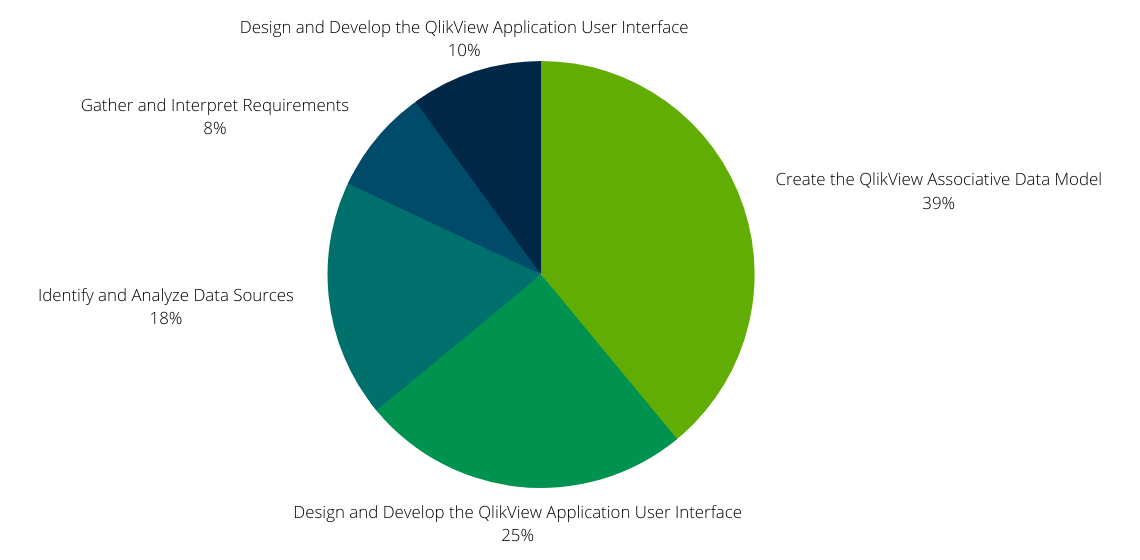
To prepare, you can use various materials such as the certified instructor-led training, the business analyst and data architect sections of the Qlik Continuous Classroom, Advanced Topics in Design and Development , and the sample questions for the QlikView data architect certification from Qlik learning.
1-5. QlikView System Administrator Certification
The QlikView System Administrator certification assesses your skills in managing a QlikView Server and Publisher environment, installing and configuring them, performing administrative tasks, and resolving technical problems and errors.
To pass this exam you should have a good knowledge of business intelligence, reporting and data analysis, be familiar with QlikView software and, more specifically, with the Server and Publisher services, and know how to use Microsoft Windows Server environments.
The exam lasts 2 hours and consists of 60 multiple-choice questions.
To validate this certification you will be required to achieve a score of 65%.
The topics of the exam are as follows:
Install and Configure the Environment: Explain the purpose of different QlikView services; Determine the appropriate service installation to meet customer requirements; Determine how to share system resources between QlikView services; Determine the implications and outcomes of a specific configuration.
Administer the Environment: Differentiate between functionality of licensed and unlicensed Publisher; Determine the appropriate task type to meet customer requirements; Determine an appropriate method to monitor tasks; Given a scenario, determine the appropriate options for configuring a task; Given a scenario, determine the appropriate CAL type to use and describe methods to apply CAL types; Describe how to proactively manage QlikView platform infrastructure; Determine an approach to proactively manage Windows platform infrastructure (e.g. IIS, event logs, folder permissions).
Troubleshoot the Environment: Identify an error based on log file information; Determine the appropriate steps to identify issues (e.g., user reported, dialog box); Determine the cause of common performance issues; Determine the appropriate system resource allocation to meet requirements; Determine an appropriate strategy to resolve a performance issue; Determine the cause of an environmental issue; Describe how to handle client-server communication problems.
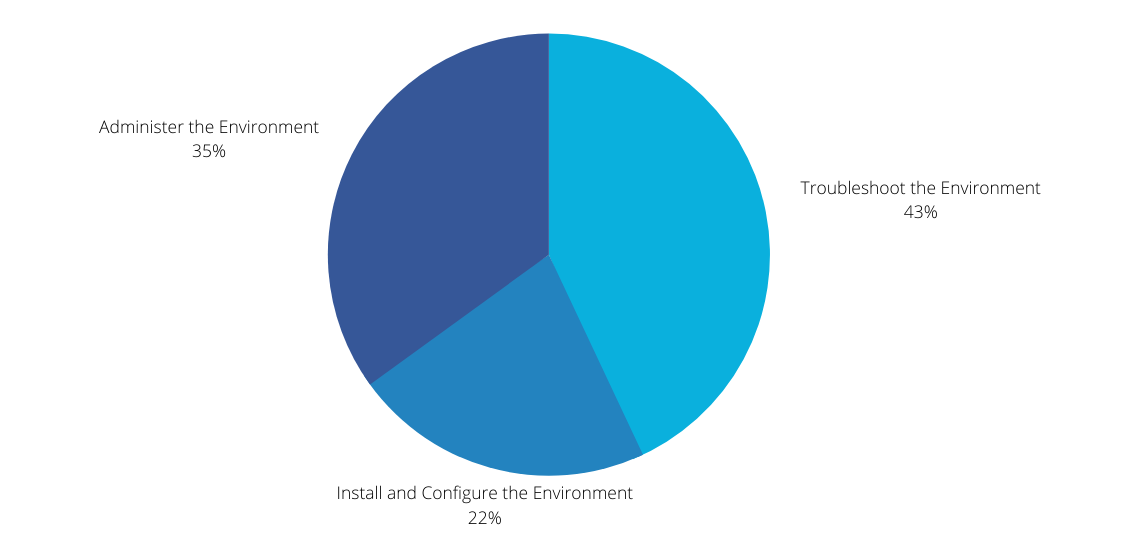
To prepare, you can rely on various resources such as certified instructor-led training and sample questions for the QlikView System Administrator certification from Qlik learning.
1-6. Qlik Sense Business Analyst Certification
The Qlik Sense Business Analyst certification validates your ability to identify business requirements, design and develop applications, and prepare and load data.
To pass this exam, you should be able to develop applications in Qlik Sense, create dimensions, measures and objects for the main library, decrypt the user experience, know good design practices and know-how to create visualizations.
The exam lasts 2 hours and consists of 50 multiple choice questions.
To validate this certification you will be required to achieve a score of 58%.
The topics of the exam are the following:
Identify Requirements: Describe how the Qlik Sense capabilities can assist in analysis of data; Determine which Qlik products and QSE features/methods are needed to meet business requirements; Translate business needs into technical requirements.
Design Application: Organize the application layout to meet business needs; Determine which visualizations meet business requirements; Determine design elements needed for flexibility, ease of use, and maintenance.
Prepare and Load Data: Apply the steps to create the associative data model using the data manager; Troubleshoot basic data modeling and data issues.
Develop Application: Configure dashboards and visualizations to illustrate business insights; Apply steps to share business insights.
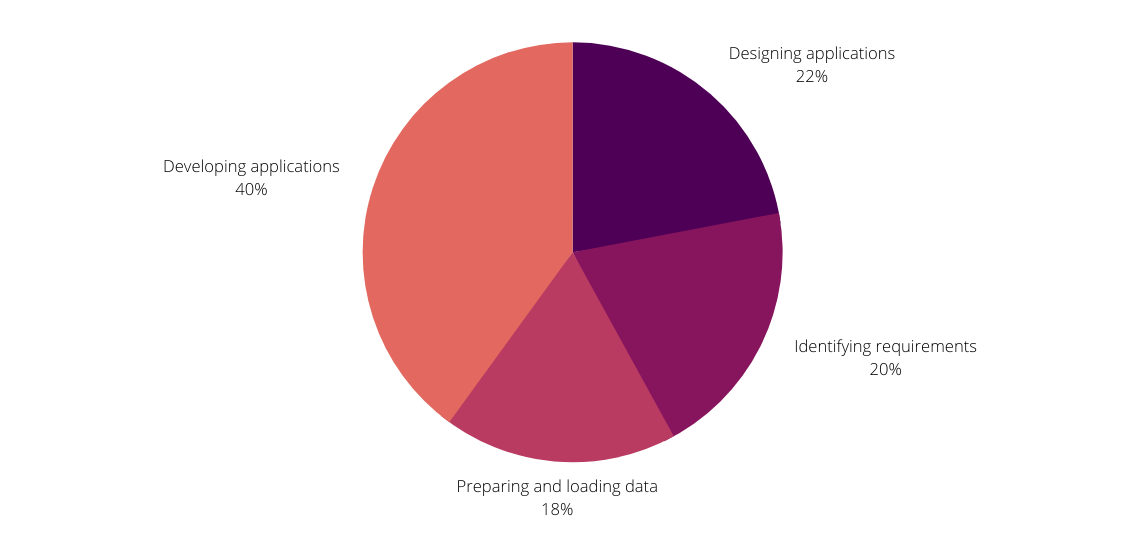
To prepare, you can use a variety of ressources such as the Creating Visualizations with Qlik Sense training from a certified instructor, the Creating Applications and Visualizations in Qlik Sense online help, the Business Analyst section of the Qlik Continuous Classroom, the study guide for the certification exam, and the sample questions for the Qlik Sense Business Analyst certification from Qlik learning.
1-7. Qlik Sense Data Architect Certification
The Qlik Sense Data Architect certification validates your ability to identify data models’ requirements, design and create these databases and validate the data.
To pass this exam, you should be able to develop several production-quality applications in Qlik Sense, write LOAD scripts and validate data, have a complete knowledge base of the extract, transform and load (ETL) process, be able to create and use connectors from data sources, understand the QVD layer and architecture, create a data architecture, and be proficient in SQL and relational databases.
The exam lasts 2 hours and consists of 50 multiple-choice questions.
To validate this certification, you will be required to obtain a score of 58%.
The topics of the exam are the following:
Identify Requirements for Data Models: Identify the data load and refresh requirements (e.g., tiered architecture, multiple data sources, varying refresh times); Given a scenario, identify Qlik Sense features to meet customer needs (e.g., associative data model, master items, ODAG, GeoAnalytics); Outline steps to implement security requirements.
Design Data Models: Determine an appropriate data model design to meet customer needs; Decide on an appropriate data model that prioritizes reuse, scalability, and efficiency (e.g., tiered architecture, data governance); Determine how to manage complex scenarios (e.g., calendar, set analysis, flags, functions).
Build Data Models: Create data models (e.g., join, keep, resident load, where clause, incremental load, purge strategy, variable); Given a scenario, use data transformation techniques with both data load editor and data manager; Manage security using section access; Use the Qlik Converter to migrate QlikView documents to Qlik Sense applications; Use appropriate data connections.
Validate Data: Validate data models against source information using Qlik Sense visualizations; Resolve data modeling issues (e.g., synthetic keys, circular references, scripting errors, debugging); Resolve data issues (e.g., null values, data formatting).
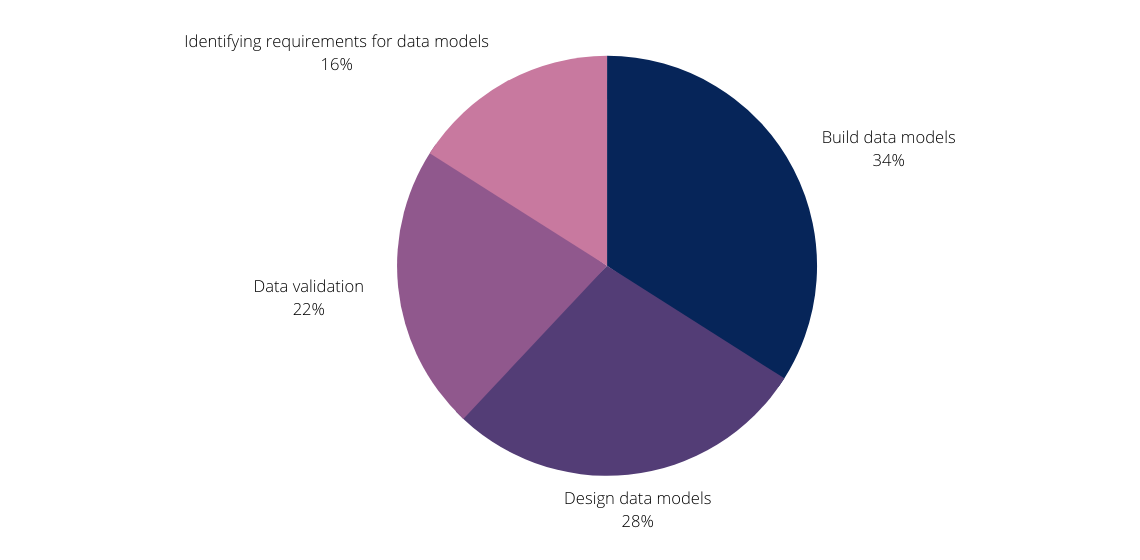
To prepare, you can rely on various materials such as the training, Data Modeling for Qlik Sense, given by a certified instructor, the “script and keyword statements” and “data management” sections in Qlik Sense online help, the Data Architect section of the Qlik Continuous Classroom, the study guide for the certification exam and the sample questions for the Qlik Sense Data Architect certification from Qlik learning.
1-8. Qlik Sense System Administrator Certification
The Qlik Sense System Administrator certification allows you to validate your knowledge of environment requirements, installation and configuration of Qlik Sense Enterprise, manage environments and be able to perform monitoring and troubleshooting.
To pass this exam, you must have worked for at least six months as an administrator in a Microsoft Windows Server environment, know how to use Qlik Sense sites and the Qlik management console, be able to use policies and options to run Qlik Sense servers and applications, create rules and manage visualization workflows, be able to network and configure Active Directory, proxies, intermediate web servers, be familiar with Windows tools and logs, be able to use troubleshooting browser tools such as NSLookUp, Telnet, Ping, NetStat, Fiddler
The exam lasts 2 hours and consists of 50 multiple-choice questions.
To validate this certification you will be required to have a 64% pass rate.
The subjects of the exam are the following:
Plan Installation: Given a scenario, recommend environment architecture; Given a scenario, determine appropriate security strategies.
Install System: Configure initial environment for Qlik Sense access; Configure multi-node deployment; Configure proxy and virtual proxies.
Manage Content: Configure tasks based on business and system needs; Apply procedural concepts to organize external content (Content Library and Extensions); Apply steps to manage streams and apps; Apply steps to manage privileges in the Qlik Sense deployment; Configure user roles and properties.
Monitor and Maintain: Investigate Qlik Sense errors and issues; Given a scenario, demonstrate an understanding of how to monitor system performance; Apply the steps to perform a backup and restore; Apply the steps to perform upgrade(s).
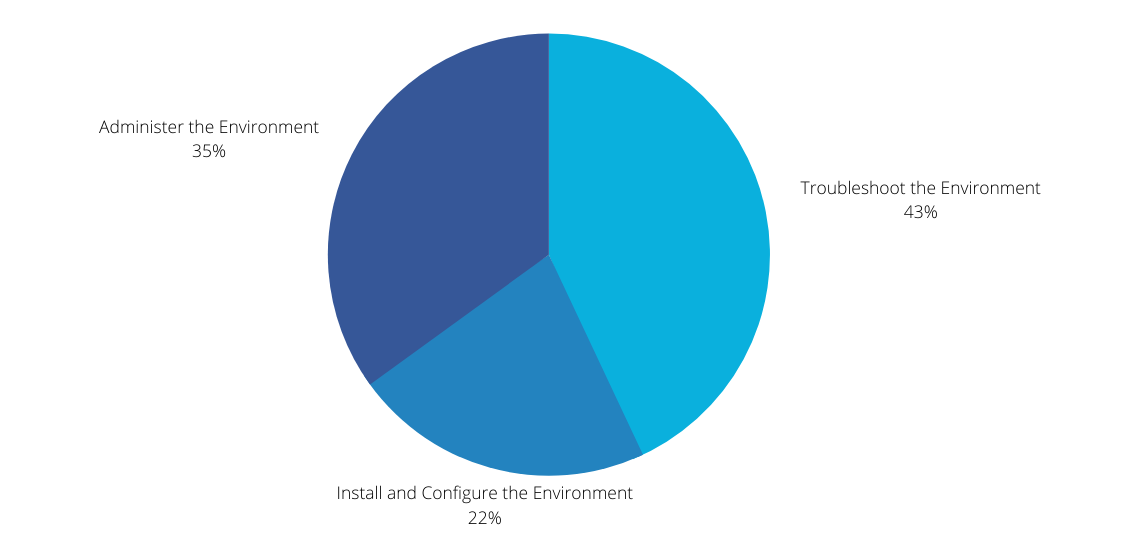
To prepare, you can rely on various materials such as the Deploy and Administer Qlik Sense training from a certified instructor, the Managing a Qlik Sense Site, Monitoring a Qlik Sense Site, and Troubleshooting Qlik Sense with Logs sections in Qlik Sense online help, the System Administrator section of the Qlik Continuous Classroom, the study guide for the certification exam, and the sample questions for the Qlik Sense System Administrator certification from Qlik learning
1-9. Qlik Sense Business Analyst Qualification
The Qlik Sense Business Analyst qualification allows you to validate your knowledge of the Qlik Sense software.
You will be asked to create a Qlik Sense application and complete a 1.15-hour exam by answering a series of multiple-choice questions.
The topics of the exam are as follows:
Describe the various views in Qlik Sense; Demonstrate navigating between different views; Explain the value of stories; Demonstrate building stories; Describe circumstances in which to use stories; Describe the use of effects in stories; Identify the components of an app; Demonstrate creating basic sheets; Examine and conduct an analysis in an app; Tell a simple story; Describe how to create a bookmark; Describe elements saved in a bookmark; Manage bookmarks; Search for and apply bookmarks; Explain the value of creating master items; Explain the process to create master items; Analyze data for other users; Demonstrate configuring master dimensions; Compare the ‘Add data’ and ‘Data load editor’ options; Compare the app sections for loading data into an app; Demonstrate loading tables from multiple data sources; Explain how key fields are identified and associations created; Use various chart types; Select the appropriate chart type; Apply visual analysis features; Distinguish between Qlik Sense Enterprise, Qlik Sense Desktop, and Qlik Sense Cloud; Determine which features are locked upon publishing; Describe the value of sharing apps in Qlik Sense Cloud; Describe the benefits of ‘in-memory’ data; Reload data in Qlik Sense Desktop; Explain data reload tasks in Qlik Sense Enterprise; Describe the benefits of the associative selection model; Demonstrate selecting data in visualizations; Describe the benefits of the selections bar and selections tool; Explain the uses and benefits of snapshots; Demonstrate taking a snapshot; Use snapshot annotations; Demonstrate managing the snapshot library; Demonstrate adding a snapshot to a story; Explain the difference between dimensions and measures; Apply dimensions and measures to visualizations; Determine which chart type to use based on dimensions and measures; Demonstrate configuring alternative dimensions and measures; Identify the various types of searches; Explain what is searched for each type; Demonstrate the various types of searched.
To prepare, you can rely on a variety of materials such as training, creating visualizations with Qlik Sense, delivered by a certified instructor, and the Business Analyst course section of the Qlik Continuous Classroom.
1-10. Qlik Sense Data Architect Qualification
The Qlik Sense Data Architect qualification allows you to validate your business knowledge.
You will be asked to create a Qlik Sense application and take a 1.5-hour multiple-choice exam.
The topics of the exam are as follows:
Describe the various views in Qlik Sense; Evaluate when to use the ‘Add data’ option or the data load editor; Demonstrate loading tables from multiple data sources; Explain how key fields are identified and associations created; Demonstrate using the data model viewer to evaluate the underlying data; Explain the capabilities of the data manager view; Explain how the data manager creates and edits data load script; Demonstrate accessing and using association recommendations; Describe the purpose of the data load script; Apply techniques resolve data issues; Demonstrate creating a connection to a database; Use various database file connection options; Use the data connections during execution; Evaluate associations created by aliasing fields in the data load script; Describe a table loading structure; Demonstrate transforming data using expressions; Evaluate scenarios in which to use a stacked preceding load; Determine causes of synthetic keys in a data model; Recommend solutions for resolving synthetic keys; Recommend solutions for resolving circular references; Demonstrate creating concatenated keys; Demonstrate fully qualifying field names; Examine solutions to script errors using the debugging tool; Demonstrate locating and identifying errors in the data load script; Demonstrate creating a data comparison table in a data model; Demonstrate creating a validation object in an app; Use counter fields for row counting; Appreciate what is meant by ‘in-memory’ data; Describe how data reload tasks are handled in Qlik Sense Enterprise; Explain visibility of variables in an INCLUDE statement; Demonstrate creating a custom sort order with INLINE statement; Demonstrate creating a subset table with RESIDENT statement; Determine when to create a dedicated calendar dimension; Demonstrate creating a master calendar table; Evaluate the various methods of combining tables; Demonstrate various types of table concatenation; Demonstrate various types of joins; Evaluate scenarios for using mapping tables; Demonstrate loading data from Qlik DataMarket into a data model; Evaluate the changes to the data load script when using Qlik DataMarket; Explain the value of creating master items; Explain the process to create master items.
To prepare, you can rely on various ressources such as the training, Data Modeling for Qlik Sense, given by a certified instructor and the Data Architect course section of the Qlik Continuous Classroom.
2- How much does a certification cost?
Qlik certifications cost $250 each, and you can pay for them when you register on the Pearson Vue website. The amount will be converted into your local currency by your bank as Qlik does not price these exams in multiple currencies.
The qualifications are included with enrollment in the Qlik Continuous Classroom program or if you purchase a training course with a Qlik instructor.
3- Where to take the certifications and qualifications exams?
All certifications are delivered by Pearson VUE. You can choose to take it online or directly at a Pearson VUE approved testing center.
If you choose to take the exams at an approved testing center you will need to select it at your convenience.
You will be asked to arrive at least 15 minutes before the start time of the exam.You will be examined to avoid any violations of the established rules.
You will then be placed at a workstation under the supervision of an examiner. If you need a break, have a technical problem, or have finished your exam early, you will be asked to raise your hand silently to attract your examiner’s attention.
Your results will be given to you directly after your exam.
It will take 24 hours to get your badge and certificate online on Qlik CertTracker.
If you choose to take the exams online, you will need to arrive 15 to 30 minutes before your exam starts. The examiner will need to verify your ID, photos and workspace beforehand. You will then take the test under webcam and microphone surveillance.
It will take 24 hours to get the badge and certificate online at Qlik CertTracker.
Qualifications are held as part of the Qlik Continuous Classroom and are delivered online.
For your inscriptions, simply login to the platform using your Qlik credentials and select “Academic Program” from the menu at the top of the home page. If you are currently an active member of the Academic Program, you will automatically have access to the new qualifying exams.
Current Pandemic Actions:
Covid 19 has caused changes in the organization of the exams and precautions have been put in place to ensure the safety of candidates.
You will not be allowed to take the test if you have been tested positive, have symptoms of the disease, have been in contact to someone positive, or have been quarantined by governmental measures, with the exception of being symptom-free for 14 days.
Your test date may be delayed due to regulations or precautionary measures.You will be asked to select a new testing location near you.
If your test date must be canceled, you will be automatically refunded.
Please note that some centers have extended their hours to 24 hours a day, so please check whether you are taking the test at the beginning of the day (a.m.) or the end of the day (p.m.).
During the examination, you will be asked to wear a mask and to respect the safety distances. Hydroalcoholic gel will be provided and you may also bring your own protective gloves that the examiner will check before the exam begins.
Depending on the exam center, a temperature test may be performed.
For more information: https://home.pearsonvue.com/Test-takers/Resources.aspx?ot=collapse156
4- How to prepare?
To give yourself the best chance on the day of the exam, you will have to prepare yourself with the help of the different resources offered by Qlik, study the topics, take the free practice test, and practice as much as possible in order to master the software.
Before the PearsonView Online exam:
- Create a PearsonVue account using the same email address, name, and company name as your Qlik account.
- Complete the system test and mock exam to ensure as few bugs as possible on the day.
- Determine where you are going to take the test, either at the office or at home, you need to find a quiet place without distractions.
- Make sure your ID is valid and up to date.
On the day of the online test:
- Set up and prepare your workspace, remove papers, books, and other clutter.
- Prepare your computer, disconnect all software, and close applications.
- Register for your exam. You can begin the registration process up to 30 minutes before the exam begins.
5- Some specificities about the exams
Certifications and qualifications are only available in English.
If you live in a country where English is not the common language, you will automatically receive 30 minutes of additional time.
The exams consist of multiple-choice questions.
If more than one answer is possible, the instructions will give you exactly the number of responses required. You must then choose the exact number of correct answers to receive credit for the question.
Some answers may include an attachment that must be used to answer the question.
Examination scores are calculated by adding up the number of correct answers and determining whether that number is above or below the exam’s minimum passing score.
6- How to display badges and certificates?
Use Qlik CertTracker to manage your Qlik certifications, you will need a Pearson Vue account.
After passing your exam, log in to Qlik CertTracker to download the official certification logo, share and print your certificate.
For your Data Literacy and Data Analysis qualifications, you will find your badges and certificates in your Qlik Continuous Classroom profile.
You can share the digital badge and certifications on your social networks such as Linkedin and highlight them on your resume to showcase your business and software expertise.
7- In case of disability
If you need special accommodation for learning or health problem, you can benefit from arrangements according to your disability, additional time, separate examination rooms, breaks, …
You will need to send a medical certificate and the desired request to [email protected].
Subscribe to receive the next articles 👇
